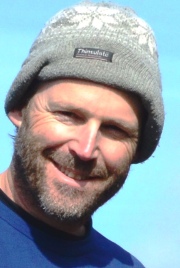10 highlights that show progress and should give us hope for the coming decade
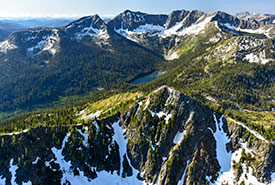
Next Creek watershed (Photo by Steve Ogle)
At the dawn of 2010, the world seemed ready for change. There was increasing awareness about nature and the environment, and voices calling for action on climate and nature conservation were growing louder. A transition to true sustainable development was called for by the United Nations as they announced that the 2010s would be the International Decade of Biodiversity.
Fast-forward 10 years, to another decadal dawn. In many ways, it seems we are still hearing those voices calling for the same actions. There’s lots of data for the pessimists. In the last 10 years, the amount of carbon dioxide pollution in the atmosphere has not stabilized, but has increased from 388 ppm to 412 ppm. During the International Decade of Biodiversity, the number of species on the IUCN Red List of Threatened Species doubled to over 30,000. And scientists are now warning us that up to one million species may be at risk of extinctions in the coming decades.
But change, especially change at the scale of a country or a planet, takes time. It’s rarely linear, often not sequential and never predictable. There will be resistance, rebellion and remission. In the last decade though, there are signs that the world is transforming. Not as fast as some people would like — and maybe not as fast as we need — but in the chaos of backpedalling, sidestepping and grandstanding, there are steps moving us forward. Steps toward a transition where we make world that is better for nature, and as a result, better for people.
Here are 10 nature conservation highlights from Canada, and around the world, of the last decade that provide evidence for hope. Examples that, if amplified, if repeated and if built upon, will help shape the world we need in the coming decade.
Citizen science
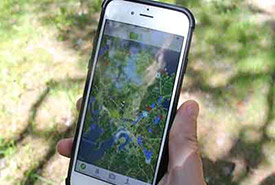
The Wildpaths maritimes project is a citizen science project that helps protect wildlife by using the iNaturalist app. (Photo by NCC)
The 2010s saw the rapid rise of citizen science. Almost every person on the planet is now carrying around one of the world’s most power scientific instruments ever invented, in the form of their cell phone. With a couple of clicks, apps such as iNaturalist or eBird are allowing all of us to document nature like never before. There are now over one billion observations in the Global Biodiversity Information Facility that are changing what we know about nature and how we protect it.
Natural cities
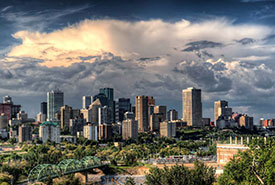
Edmonton downtown skyline (Photo by Pixabay)
Cities are rapidly growing around the world. While urban growth can cause many ecological problems, in cities across the planet, nature is making a comeback. Because of improved water quality, you can now find seals in London’s Thames River. Across Canada, cities like Edmonton and Toronto have developed biodiversity strategies and are embarking on bold restoration projects to integrate nature into the built environment. These projects are providing gateways for people to connect with the natural world and rediscover the reciprocal relationship between nature and people.
Growing protected areas
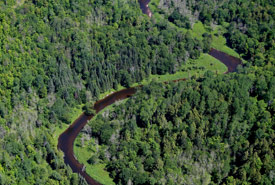
Kenauk, QC (Photo by Mike Dembeck)
One of the most inspiring changes over the last decade has been the rapid growth in protected areas. With 15 per cent of the planet’s land and inlands waters protected, the global target of protecting 17 per cent by 2020 under the Convention on Biological Diversity will be achieved. In Canada, the amount of protected area has crept up to almost 12 per cent. This growth was supported by the Natural Areas Conservation Program (NACP). Under the NACP, the Nature Conservancy of Canada, Ducks Unlimited Canada and partners conserved more than 446,000 hectares (more than 1.1. million acres) and achieved nearly $1 billion in conservation outcomes. Perhaps even more important than what we have achieved is what we are now aspiring to. Canada has set its sights on now conserving 25 per cent of its lands and oceans by 2025, working toward 30 per cent of each by 2030, and is providing global leadership by reaching towards these new goals.
Wildlife recovery
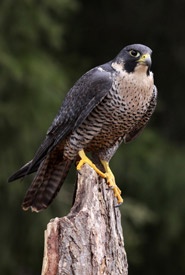
Peregrine falcon (Photo by Chris Hill)
Despite a growing number of threatened species, there is also a growing list of species that we are saving from extinction. Two of the world’s most iconic endangered species, giant panda and mountain gorilla, were both down-listed on the International Union for Conservation of Nature (IUCN) Red List of Threatened Species in the past decade. In Canada, peregrine falcon, hooded warbler and roughhead grenadier (a marine fish) have all been re-assessed as not at risk in Canada, thanks to conservation efforts. And species such as small-white lady's-slipper, wood bison and Rocky Mountain tailed frog have been down-listed.
Indigenous protected areas
Over the past 10 years, the essential role of Indigenous Peoples in protecting nature has been better acknowledged by governments and conservation organizations. The IUCN has now created a new category of protected areas called Indigenous Protected and Conserved Areas. In BC, Tribal Parks and Conservancies are expanding. In 2018, Canada announced the Edéhzhíe Protected Area, an Indigenous protected area in the traditional Dehcho territory in the Northwest Territories. In Canada’s push to expand protected areas, the process has been designed to respect the rights, responsibilities and priorities of Indigenous Peoples and is being led by the Indigenous Circle of Experts.
New forests
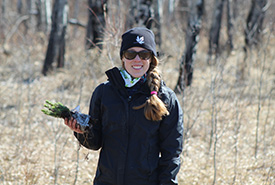
Reforestation and improving forest management, together, have large potential to remove CO2 from the atmosphere. (Photo by NCC)
Many of the planet’s forests are in trouble, and the last wild areas on Earth are now restricted to just a few countries, including Canada. But the 2010s have also been a decade of reforestation in many parts of the world. In 2011, the Bonn Challenge was created as a global initiative to restore 150 million hectares of the world’s degraded lands by 2020, and 350 million hectares by 2030. In countries like China, India and the U.S., these new forests are resulting in an overall increase in forest cover.
Arduous progress on climate change
Over the past decade, we have gained a very clear understanding, and increasing examples, of how climate change will impact society. We’ve identified how we can use nature-based solutions to help lessen the impacts and that economic growth and carbon pollution don’t need to go together. Through the Paris Agreement, we also have broad consensus that our collective planetary thermostat cannot be turned up any higher than 2 degrees Celsius. But, as we’ve just seen with the lukewarm results at the recent COP25 talks in Madrid, it may be up to individuals, cities and corporations to lead the world in reducing carbon pollution.
New tools for conservation that highlight hope
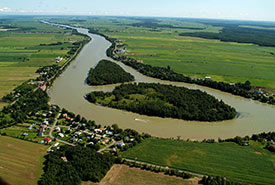
Richelieu River, îles de Jeanotte et aux Cerfs, QC (Photo by Claude Duchaîne)
Conservationists sometimes have the reputation of focusing on doom. The lists and maps we create that highlight urgency and loss are critical, but they don’t message our success and opportunity. Over the last decade, new tools have been developed to create “Green Lists” for species and protected areas that showcase what’s working in conservation. A new standard was developed to identify and map Key Biodiversity Areas (KBAs) around the world. KBAs shine a light on the places in Canada and around the world where we still have an opportunity to protect some of the planet’s most important wildlife and ecosystems.
#NatureForAll
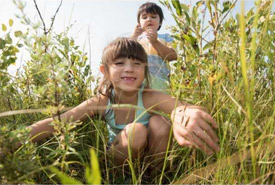
Kids in nature (Photo by Thomas Fricke)
Conservation needs people to value, and ultimately to love, nature. In many western cultures, a wedge has been driven between society and ecology that degrades both nature and our well-being. The IUCN’s #NatureForAll initiative is working to rebuild that connection by communicating the benefits that everyone can have through a better connection with nature.
People support nature conservation
Despite often slow progress in conservation, and frequent, setbacks, there is very strong support to protect nature. In Canada, the vast majority of the public supports protecting endangered species, increasing protected areas, and knows that they are happier when spending time in nature. This support for nature occurs across regions and demographics in Canada and other nations too.
At the dawn of 2020, this is our situation: we generally know what we need to do, and that we need to do better, but our delivery is falling short. There is evidence that we can save species, we can have economic growth and reduce carbon pollution, and we can improve our well-being through a stronger connection to nature.
There may never be a better time for the tension of transition to be released and propel us forward. Public support is strong, and Canada’s Nature Legacy will invest $1.35 billion into nature conservation. This is practical, not Pollyannaish. The United Nations has declared 2020 as the Decade on Ecosystem Restoration. The next decade may be our opportunity to decidedly change our course to save nature, and set the stage for a sustainable future.

